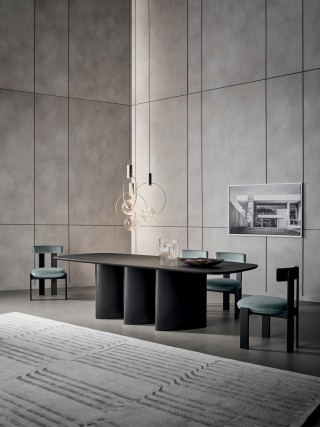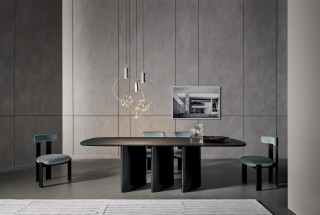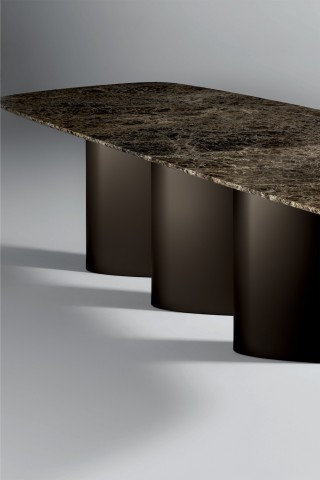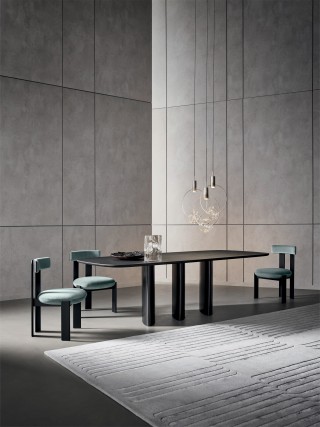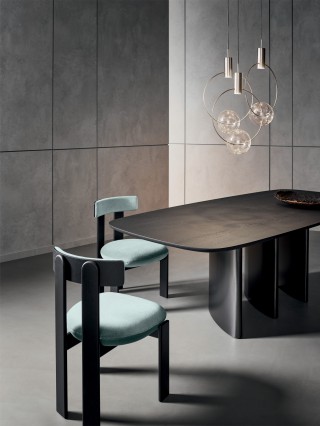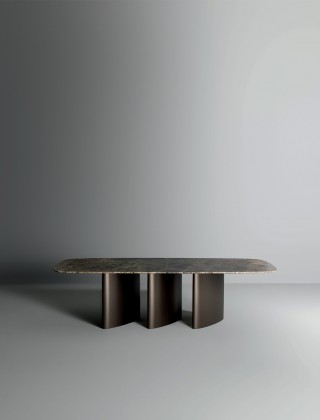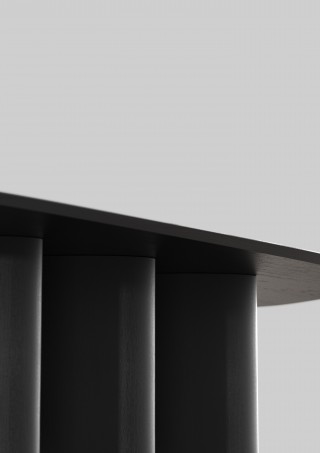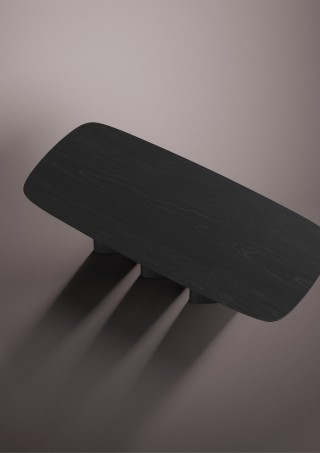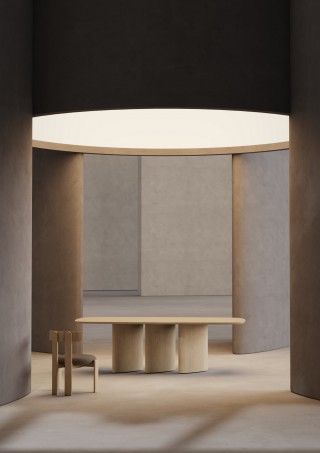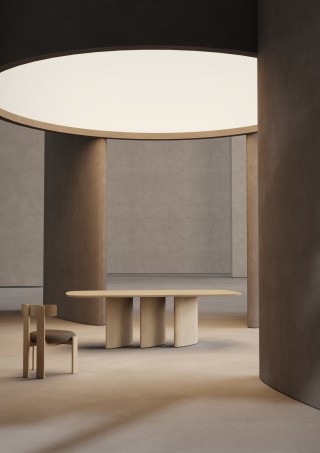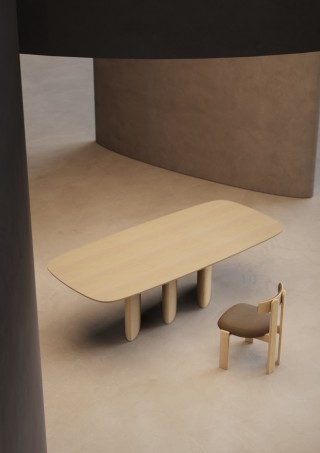LOUVER DINING TABLE
BONALDO
The Louver dining table is all about perception and repetition. It has an architecture that reveals itself little by little, appearing to be more or less open, depending on the angle from which you look at it.
Its three characteristic legs behave a bit like vertical blinds on a window, or louvers. They give the impression of being in motion, allowing more or less light to pass through, depending on whether the base is viewed from the side or directly from the front. As a result, the legs appear either light or massive.
The general architecture of its base refers to an imaginary gate, a passage, a kind of historical entrance to some kind of ancient temple left standing in the desert, through which the light would pass, casting a long shadow on the ground. The slightly curved and generous columns would be gently touched by the sun and the light.
The table is available either with a very slim ceramic top, which creates an interesting contrast with the massive base, or with a more generous veneered top to create a mono-material and sculptural architecture.
